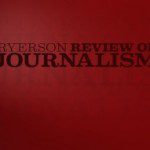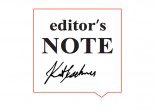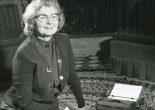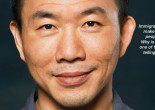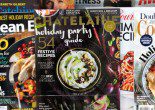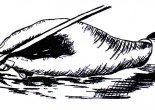”Just the Facts, Ma’am”
Hemelrijk’s not the founder of a new art form, but a magazine fact-checker. Her day is filled with continuous telephone calls and doesn’t end until every fact is verified to the ultimate degree of certainty. Re-researching and even re-reporting, the fact-checker scrutinizes every name, number, place, event and quote in a magazine story. The factchecker trusts no one, rejecting reference books and newspapers as inaccurate and human sources as fallible. In the world of fact-checking, everything is wrong until proven correct. It’s a profession of precision and pettiness virtually unknown to those outside the magazine industry. But for editors and publishers, information brokers who pride themselves on accuracy, factcheckers are their best defence against threat of a libel suit.
Hemelrijk is a veteran of the fact-checking front. She stumbled on to her vocation in 1965 while working at the nowdefunct Canadian magazine. Editor Harry Bruce approached her with the idea, which was fairly novel then. “Could you do some sort of fact-checking on this?” he asked. “At Maclean’s they do this sort of thing. I don’t know what it is, but I think they check facts.”
And from these vague instructions, Hemelrijk launched a career that has spanned 25 years and numerous magazines. She is now the chief copy editor at Vista and freelances for Toronto Life and City & Country Home.
To Hemelrijk, fact-checking is like detective work, and the primary tool of the trade is diplomacy. She describes her method of dealing with sources over the phone as pussyfooting around. It’s essential, she says, to get the person she’s interviewing on her side.
“Because you’re on the phone so much, you have to be good with humans,” adds Anne “Dusty” Mortimer Maddox, one of nine fact-checkers at The New Yorker.
Mortimer-Maddox has been checking facts at The New Yorker since 1967 except for five years spent at The Atlantic, the now-defunct TO., To-, ronto Life and The Village Voice.. Diplomacy is more than a tool to Mortimer-Maddox it’ss an art. Cadence and tone are as important to her as they are to an actor. “The way you fact-check is like reading them a bedtime story. You tell peo~ pie facts rather than ask j them,” she says. “When factcheckers say, Is it true that… they come off sounding like district attorneys.”
But to an experienced fact-checker like Hemelrijk or Mortimer-Maddox, establishing a rapport with sources is only part of the job. Just as delicate is the matter of dealing with the writer. “The writer/ fact-checker relationship demands respect,” says Hemelrijk. “It’s quite possible by the time the writers winkle down the trunk full of notes, shape the story, actually write it into beautiful prose and pick out objectives, they may lose a couple of facts.” But some are so careless that Mortimer-Maddox refers to them as “fiction writers.” Others are more professional and are genuinely horrified to hear of a mistake. Their reactions vary as well some appreciate the corrections while others lack the gratitude.
Of course, fact-checkers recognize their own worth with or without approval. “We make other people look beautiful,” Mortimer-Maddox says. “We clean the egg off the writer’s face.”
The fact-checker’s contribution is rewarded in more concrete ways as well. “Today, the good ones are paid more because they’re recognized, not recognized because they’re paid more,” says Mortimer-Maddox, who wouldn’t disclose her own salary. She did say that “baby” fact-checkers at The New Yorker start at $400 a week plus overtime after 35 hours. According to Hemelrijk, the average freelance checker in Toronto asks for $20 an hour. She gets almost double that amount.
While the salary is an incentive to stay on the job, it comes only after years of experience. For Hemelrijk and Mortimer-Maddox the biggest incentive is the job itself. “{only get worn out maybe every seventeenth week or if it was raining outside or if my toe was hurting,” says Hemelrijk. “Otherwise, I really enjoy it.”
by Fina Scroppo
Fina Scroppo was the Managing Editor, Circulation for the Spring 1991 issue of the Ryerson Review of Journalism.






